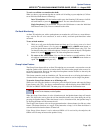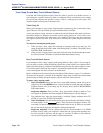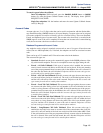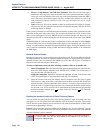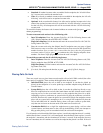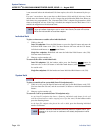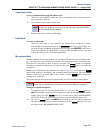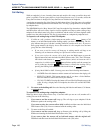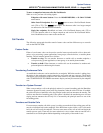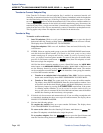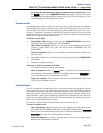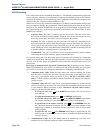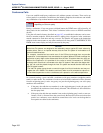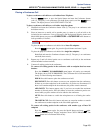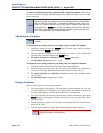
System Features
INTER-TEL
®
CS-5200/5400 ADMINISTRATOR GUIDE, ISSUE 1.1 – August 2005
Call Transfer
Page 197
To move a camped-on intercom call to Do-Not-Disturb:
While on a call, you hear call waiting signals:
Endpoints with menu buttons: Press the
DO-NOT-DISTURB, or IC CALL TO DND
menu button.
Other Inter-Tel endpoints: Press the button or enter a Do-Not-Disturb feature
code (370 or 372). The button lights. The intercom caller is no longer camped
on and receives Do-Not-Disturb indications.
Single line endpoints: Hookflash and enter a Do-Not-Disturb feature code (370 or
372). The intercom caller is no longer camped on and receives Do-Not-Disturb indica-
tions. Hookflash twice to return to the current call.
Call Transfer
The following paragraphs describe transfer feature codes and the different ways to transfer
calls on the Inter-Tel 5000.
Feature Codes
Either of two feature codes can be used to transfer intercom and outside calls to other end-
points, voice processing system applications, hunt groups, off-node devices, or outside phone
numbers. The call transfer options are as follows:
• Transfer to ring: You can transfer intercom or outside calls to another endpoint, a
voice processing system application, a hunt group, or an outside phone number.
• Transfer to hold: Either intercom or outside calls can be transferred to another end-
point and placed on hold using this feature.
Transferring Conference Calls
An established conference can be transferred to an endpoint. While the transfer is taking place,
the parties in the conference remain connected to each other and may converse. The transfer
will appear at the destination endpoint in the same manner as any other transferred call along
with a CONFERENCE TFR FROM <username> display and may be answered by the endpoint
user.
Transfer to a System Forward
When a user transfers a call to the principal station of a system forwarding path, the Handsfree
Announce System Forward system-wide flag determines what the caller will hear. If enabled,
the caller will place a handsfree call to the principal station and can announce the transfer. The
call does not enter the forwarding path. If the option is disabled, the transferring user will hear
ringing and can announce the call only if it is answered by the principal station or one of the
forwarding points.
Transfers and Outside Calls
If a user answers another call while a party is waiting on transfer hold, the waiting party will be
moved to individual hold at that endpoint. If the Hold timer expires while a call is on transfer
hold, the call will recall the endpoint. The user must return to the call on hold and begin the
transfer process again. There may be some reduction in voice volume when an outside call is
transferred to an outside phone number depending on the quality of the trunks in use.
DND
DND



